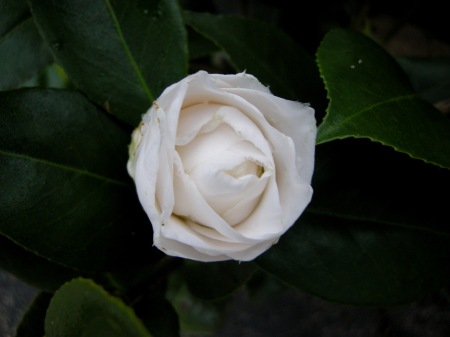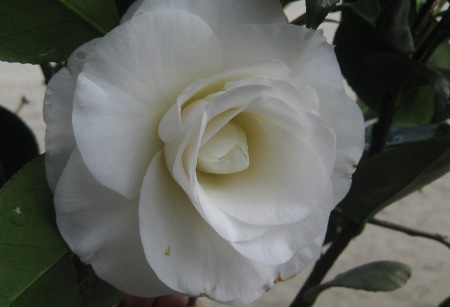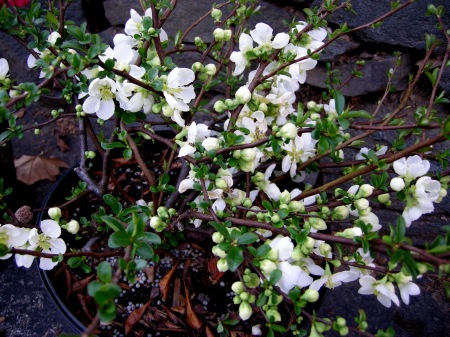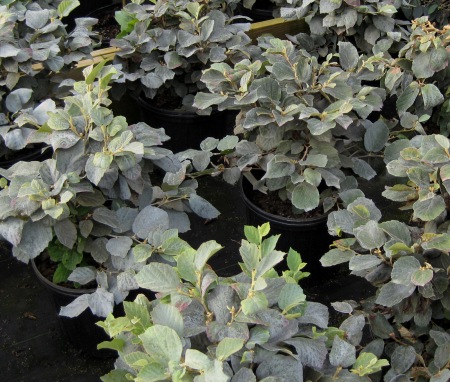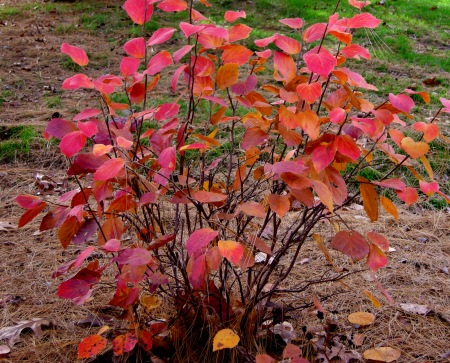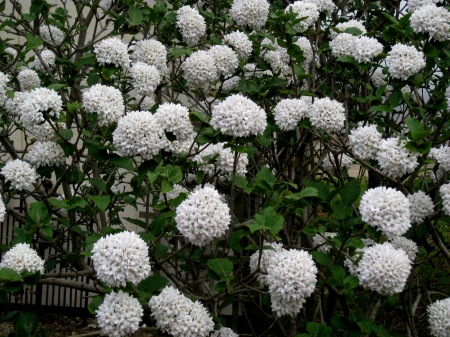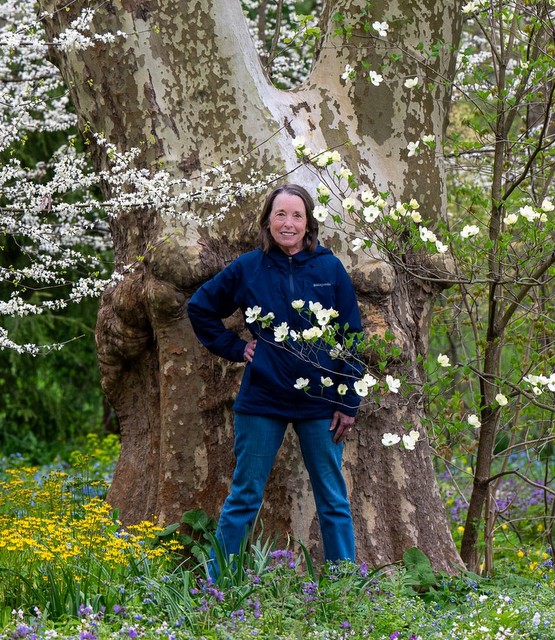 The fragrant, rose-pink double flowers of ‘Peggy Clarke’ flowering apricot, Prunus mume, have been a sensation at Carolyn’s Shade Gardens since early March.
The fragrant, rose-pink double flowers of ‘Peggy Clarke’ flowering apricot, Prunus mume, have been a sensation at Carolyn’s Shade Gardens since early March.
Blogging is a lot of work, and 2020 marks my tenth year of providing quality content to my readers all over the globe. It requires so much computer time that I have been taking a break since last October to dedicate more hours to my plant nursery and my own garden. However, with coronavirus spreading quickly through the US and my own state of Pennsylvania, I have been wracking my brain for a way that I could contribute without leaving my home. I hope that reviving my blog will give readers, and especially my wonderful customers in the beleaguered mid-Atlantic area, a brief moment of pleasure in the terrifying world we have entered.
The photos below are of trees and shrubs that provide late winter and very early spring color. They are electrifying in my garden when everything else is still winter brown.
I am dedicating this post to my high school friend Adrienne’s sister who is currently struggling to beat corona in New York and to all the healthcare workers and other personnel on the front lines, who are risking their own lives to keep us healthy. Sty home to save lives.
Nursery News: Carolyn’s Shade Gardens is a retail nursery located in Bryn Mawr, PA, specializing in showy, colorful, and unusual plants for shade. The only plants that we ship are snowdrops within the US. For catalogues and announcements of local events, please send your full name, mailing address, and cell number to carolyn@carolynsshadegardens.com and indicate whether you are interested in snowdrops. Click here to get to the home page of our website for catalogues and information about our nursery and to subscribe to our blog.
. ‘Peggy Clarke’ is a gorgeous small tree with a vased-shaped habit, sited here in a west-facing location near our front door for optimal late-winter viewing.
‘Peggy Clarke’ is a gorgeous small tree with a vased-shaped habit, sited here in a west-facing location near our front door for optimal late-winter viewing.
.
 Winter jasmine, Jasminum nudiflorum, cascades off the corner of our terrace, but I have also seen it grown as a groundcover. It normally opens a few flowers during warm days in January and February; however, we have had such a mild winter that it has been flowering for about five months. The photo shows the last few blooms as the leaves start to open.
Winter jasmine, Jasminum nudiflorum, cascades off the corner of our terrace, but I have also seen it grown as a groundcover. It normally opens a few flowers during warm days in January and February; however, we have had such a mild winter that it has been flowering for about five months. The photo shows the last few blooms as the leaves start to open.
.
.
 Our star magnolia, M. stellata, is often damaged by frost, but I wouldn’t be without its glorious masses of early, pure white flowers.
Our star magnolia, M. stellata, is often damaged by frost, but I wouldn’t be without its glorious masses of early, pure white flowers.
.
 We have planted a field of blue glory-of-the-snow, Chionodoxa forbesii, under the star magnolia, and the combination is beautiful. I couldn’t get a satisfactory shot of the two together, but you can see the magnolia trunk in the background.
We have planted a field of blue glory-of-the-snow, Chionodoxa forbesii, under the star magnolia, and the combination is beautiful. I couldn’t get a satisfactory shot of the two together, but you can see the magnolia trunk in the background.
.
 Another shrub that has been blooming off and on since late fall is evergreen Japanese mahonia, M. japonica. This mahonia is the best species for garden use as its leaves remain pristine and its flowers are a lovely shade of yellow in large sprays.
Another shrub that has been blooming off and on since late fall is evergreen Japanese mahonia, M. japonica. This mahonia is the best species for garden use as its leaves remain pristine and its flowers are a lovely shade of yellow in large sprays.
.
 If Cornelian cherry dogwood, Cornus mas, bloomed later in the season, it would be overshadowed by many other small flowering trees. However, its fresh, yellow-green flowers stand out in the stark late winter landscape.
If Cornelian cherry dogwood, Cornus mas, bloomed later in the season, it would be overshadowed by many other small flowering trees. However, its fresh, yellow-green flowers stand out in the stark late winter landscape.
. ‘Okame’ cherry, Prunus x incam ‘Okame’, viewed here from an upstairs window, provides shade for our deck and is the earliest blooming cherry with very long-lasting flowers.
‘Okame’ cherry, Prunus x incam ‘Okame’, viewed here from an upstairs window, provides shade for our deck and is the earliest blooming cherry with very long-lasting flowers.
. Under the ‘Okame’ cherry, by the edge of the deck is a dwarf Japanese maple, Acer palmatum ‘Yatsubusa Kiyohime’. Its leaves come out very early and are a striking combination of red and bronze.
Under the ‘Okame’ cherry, by the edge of the deck is a dwarf Japanese maple, Acer palmatum ‘Yatsubusa Kiyohime’. Its leaves come out very early and are a striking combination of red and bronze.
. Our edgeworthia opens its fragrant yellow and white flowers in late winter. This shrub has four seasons of ornamental interest with beautiful flowers, cinnamon-colored bark, tropical leaves, and, my favorite, copious silver buds like tassels on Victorian cushions starting in November.
Our edgeworthia opens its fragrant yellow and white flowers in late winter. This shrub has four seasons of ornamental interest with beautiful flowers, cinnamon-colored bark, tropical leaves, and, my favorite, copious silver buds like tassels on Victorian cushions starting in November.
.
.
 Yulan magnolia, M. denudata, is a relatively rare, early-blooming magnolia with large, goblet-like white flowers. Again, it can get damaged by late frosts but is well worth having in the years like this one when it is magnificent.
Yulan magnolia, M. denudata, is a relatively rare, early-blooming magnolia with large, goblet-like white flowers. Again, it can get damaged by late frosts but is well worth having in the years like this one when it is magnificent.
.
.
 Buttercup winter hazel, Corylopsis pauciflora, is an early-blooming, fine-textured shrub with elegant, butter yellow flowers.
Buttercup winter hazel, Corylopsis pauciflora, is an early-blooming, fine-textured shrub with elegant, butter yellow flowers.
.
 ‘Texas Scarlet’ dwarf flowering quince gives an eye-catching punch of color in what can still be a dreary winter landscape. It stays quite small and doesn’t have thorns like regular quinces.
‘Texas Scarlet’ dwarf flowering quince gives an eye-catching punch of color in what can still be a dreary winter landscape. It stays quite small and doesn’t have thorns like regular quinces.
My intent is to post on the blog more than once a week. You can provide inspiration to me and other readers by posting comments about your own experience with these plants or other late winter trees and shrubs. Blogs are a lot more fun for everyone, especially the writer, when they are interactive. Scroll down to the end of the page to the box where it says “Leave a Reply” and start typing—-it’s easy!
Carolyn
Notes: Every word that appears in orange on my blog is a link that you can click for more information. If you want to return to my blog’s homepage to access the sidebar information (catalogues, previous articles, etc.) or to subscribe to my blog, just click here.






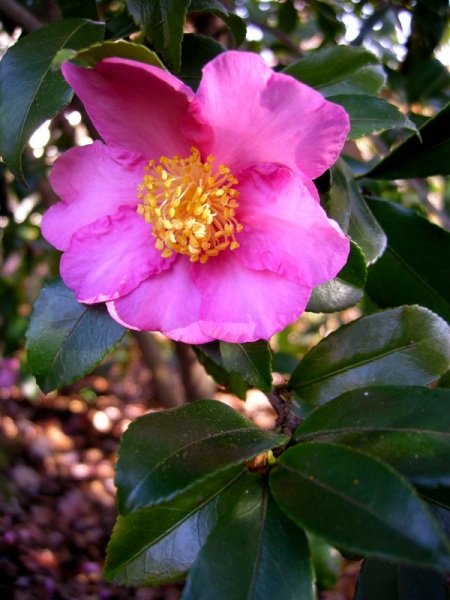



 The lovely fragrant flowers of fothergilla.
The lovely fragrant flowers of fothergilla. This is a photo of my unselected fothergilla so I can only imagine what ‘Red Licorice’ must look like in the fall.
This is a photo of my unselected fothergilla so I can only imagine what ‘Red Licorice’ must look like in the fall. ‘Golden Guinea’ Japanese kerria, Kerria japonica, produces copious amounts of large, bright gold flowers.
‘Golden Guinea’ Japanese kerria, Kerria japonica, produces copious amounts of large, bright gold flowers. A close up of ‘Golden Guinea’
A close up of ‘Golden Guinea’ The lovely buds of native sweet azalea, Rhododendron arborescens.
The lovely buds of native sweet azalea, Rhododendron arborescens. The fragrant flowers of sweet azalea.
The fragrant flowers of sweet azalea.


